Reconnecting Colors to Life
Foraged Colors aims to produce colors from materials gathered from the sea and mountains, implementing these colors in contemporary society.
Our Vision
From Selecting Colors to Making Colors

For people living in contemporary society, color is selected rather than made. Although the phrase “making colors” may sound intimidating considering the scale of its industry, human beings have been producing colors since before science as we know it came into being. Our goal is to reconnect elements that are excluded from modern industries, such as fundamental hunting and gathering insights and craft skills (such as traditional production of vegetable dyes), with mass production technologies after the Industrial Revolution by implementing these elements using contemporary industrial machines. By making colors from gathered materials, for example, the color red starts to bear complex meanings. Colors become charged with their source materials’ context, harnessing culture and folk elements, such as the materials’ source plants, their seasons, related folk ceremonies, and traditional craft and gathering techniques.
Rather than whether the color is really red, the focus will be on from what material in which area the color is produced.
Our Mission
For People Who Express Themselves with Ecological Minds
- With consideration to safety, we make this project open to anybody including places such as educational and welfare institutions.
- We aim to produce products that can be used for anything, including fashion, printing, furniture, and interior design.
- Using gathered objects and edible materials, we aim to ensure our pigments and binders are environmentally friendly.
- Our basic rules are to gather and procure only materials that are, as far as we are moderate, sustainable.
- To reduce environmental burden from waste generated in production and use, we use only materials that soil bacteria can decompose.
- We ensure it can be installed and used on contemporary industrial machines.
- We seek to ensure this project is conducted on permanent basis.
Our Originality
Techniques We Research

- 1. Gathering
- These include techniques for gathering materials specific to different characteristics of an area, such as mountains and forests.
- 2. Tuning Plant Dye into Pigment
- These techniques include manufacturing pigments by applying traditional vegetable dye production techniques.
- 3. Making Materials Finer
- Techniques for achieving finer rock, plant, and food grain sizes
- 4. Making Environmentally Friendly Binder
- Techniques for making water-based and oil-based binders using foods and plant oils and materials.
[ Things We Have Already Realized ]
-
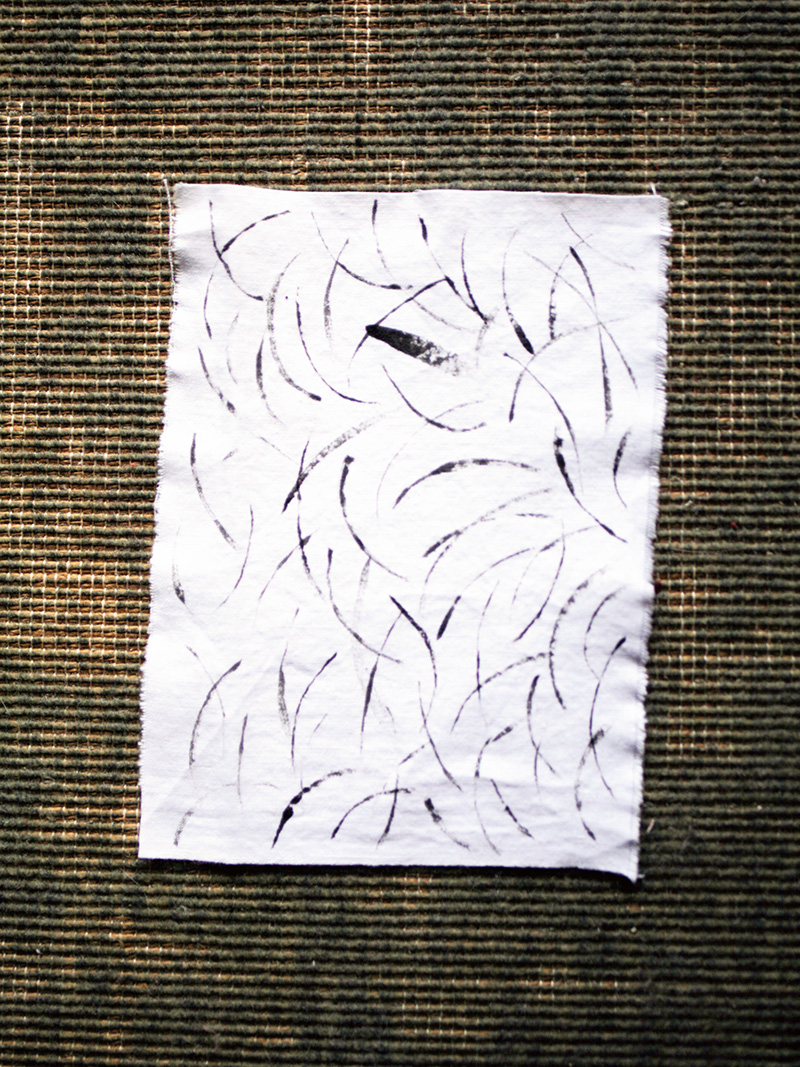
Drawing and dyeing on fabrics
Plants-based binder + white evening primrose
-
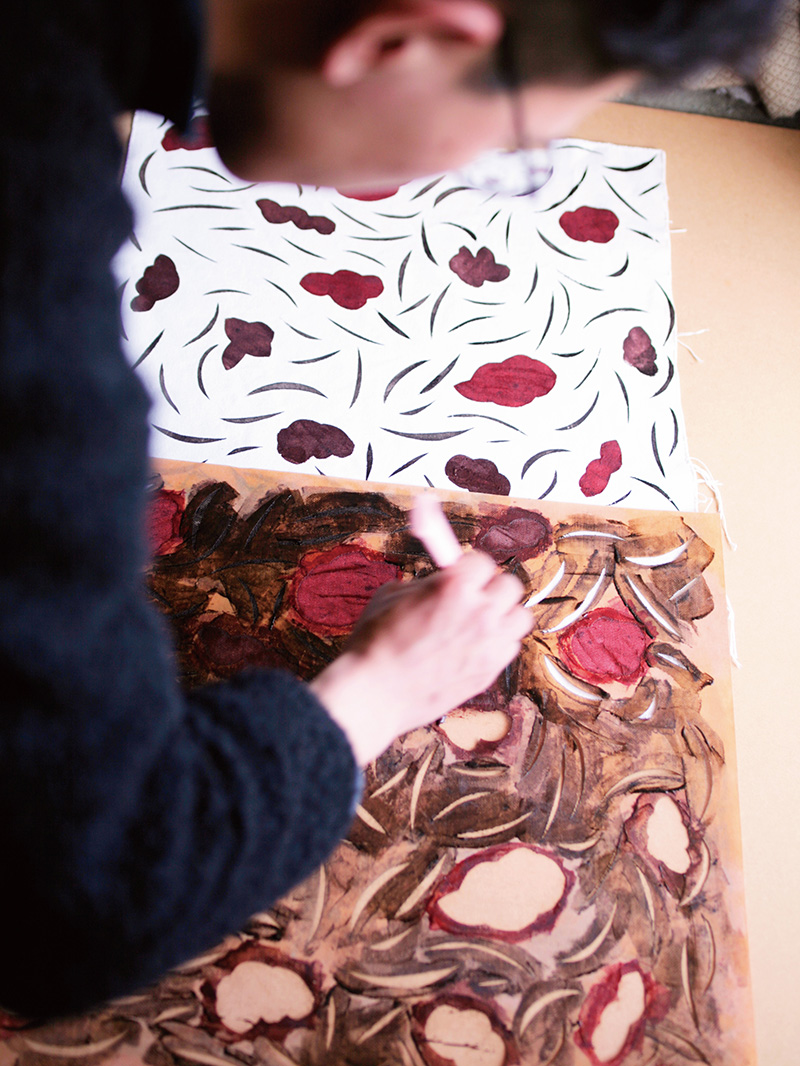
Katazome on fabrics
Plants-based binder + Rhaphiolepis umbellate or East Asian madder
-
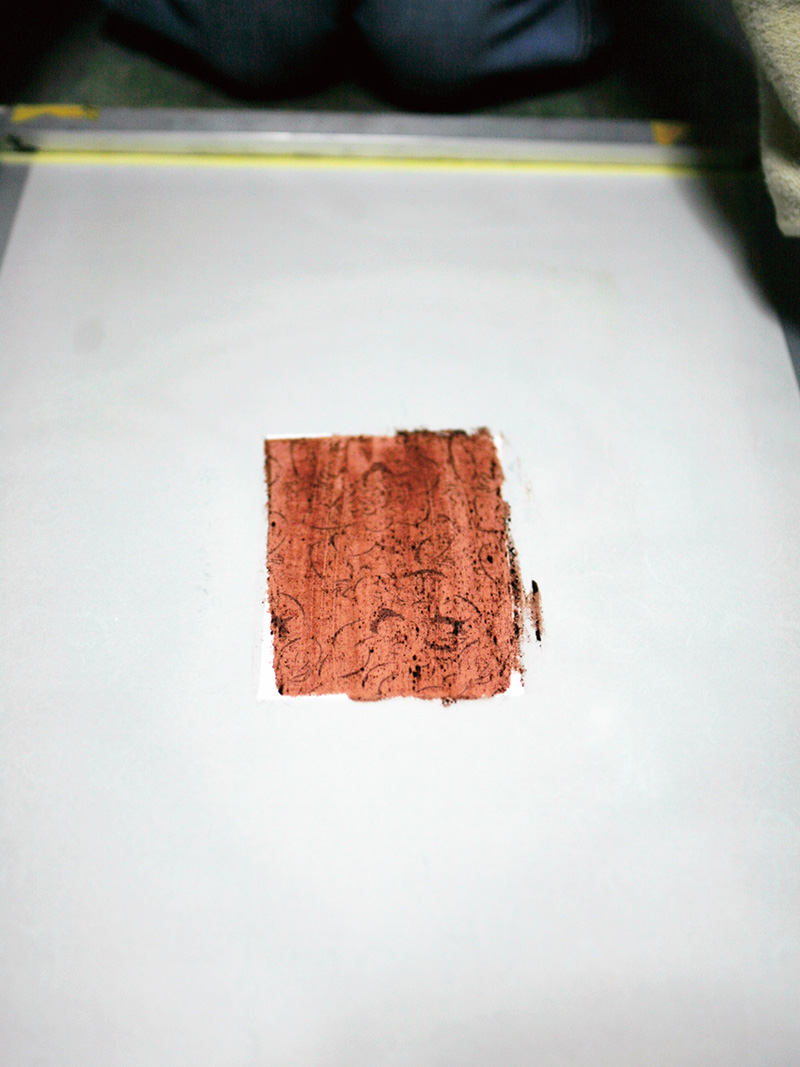
Silk screen printing on fabrics
Casein binder + Rhaphiolepis umbellate
-
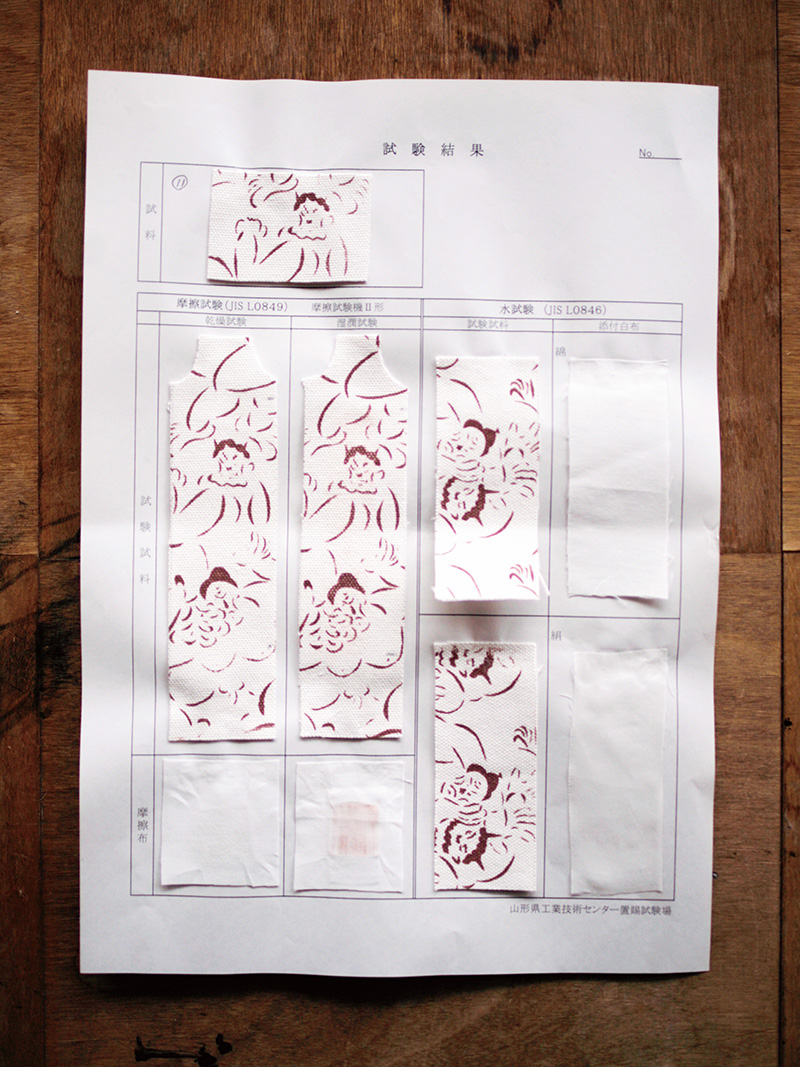
Silk screen printing on fabrics
Wear resistance and water resistance tests for Japanese Industrial Standards (JIS)
-

Watercolor for paper test sample
Gathered pigments + gum arabic or animal glue
-

Pen for paper test sample
-

Crayon test sample
-
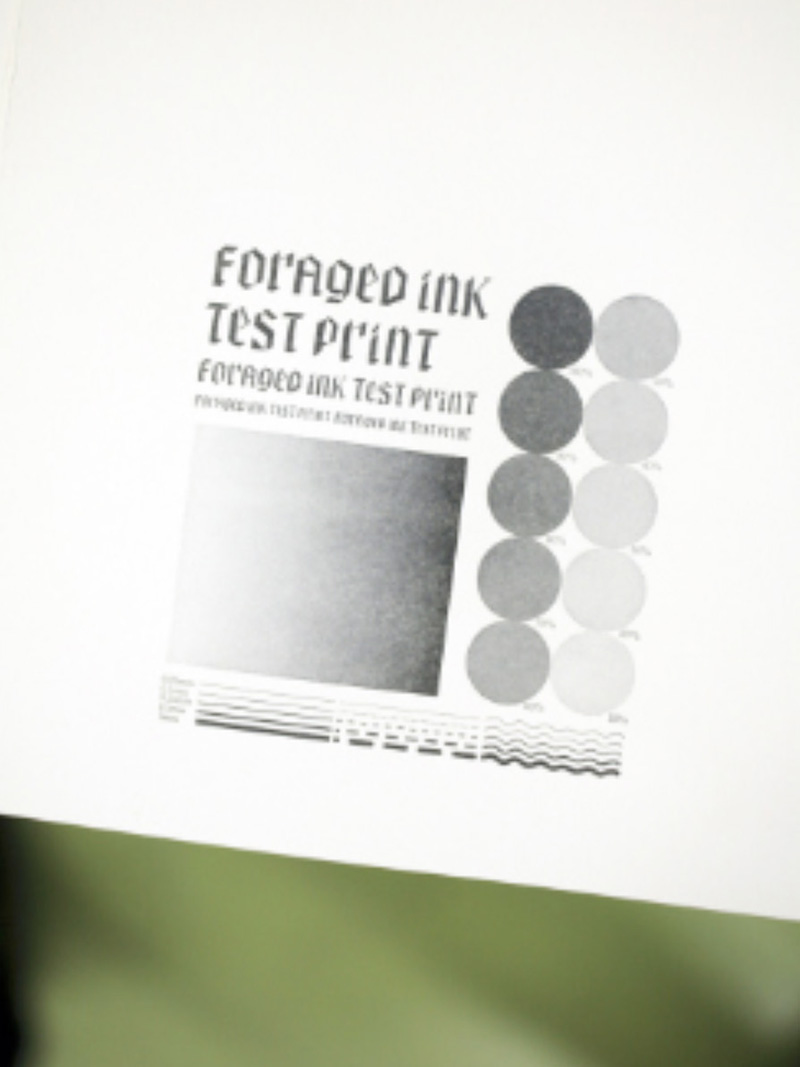
Oil-based ink for letterpress printing
Flaxseed oil varnish + pine soot
-

Oil-based ink by wild plants
Walnut + Wild Grape + Phellodendron
-
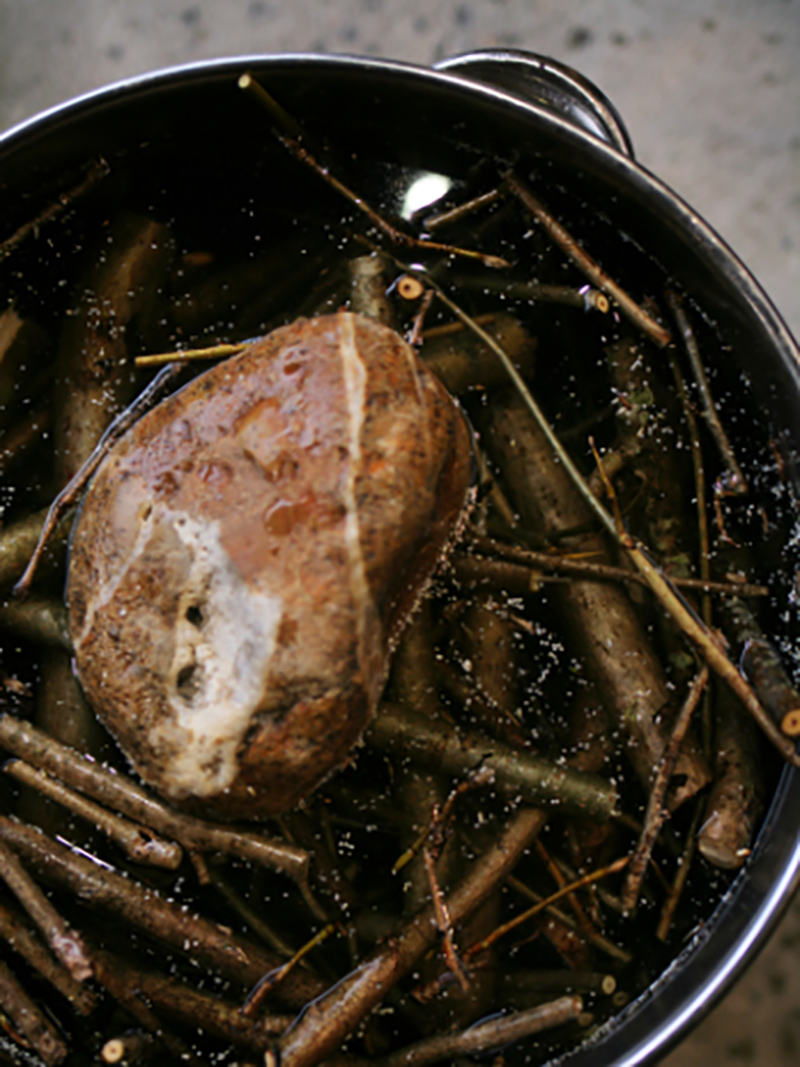
Mass production of pigments
100g/day
-
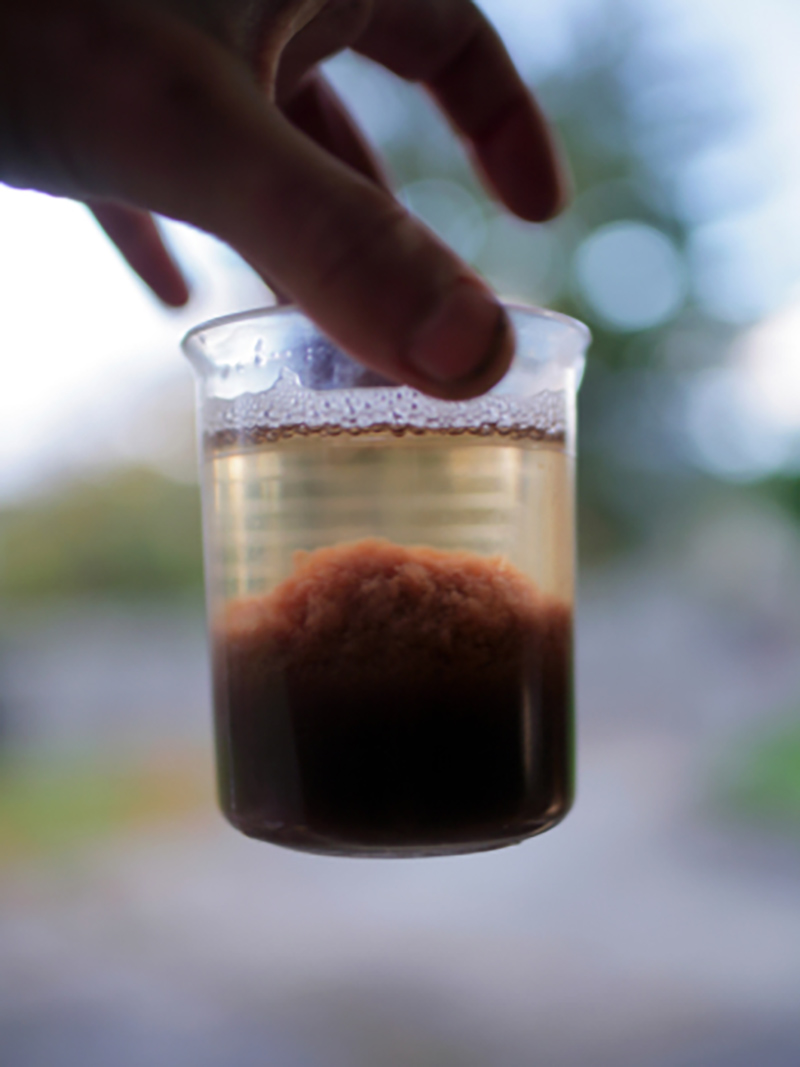
Biological pigments
Patent No.7542886
-
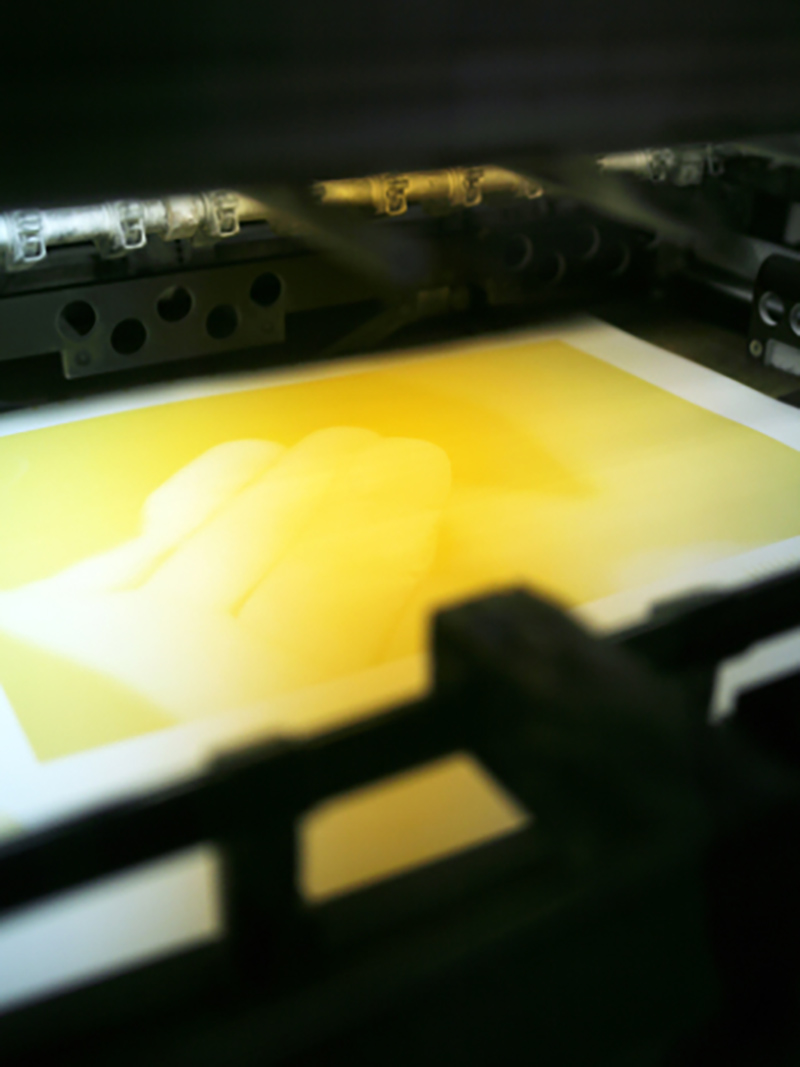
Oil-based ink offset printing
Ocher + Flaxseed Oil
[ Things We Believe We Will Be Able to Produce with Further Research and Testing ]

Project
Past and Future Activities
- 2020
- Development of pigments that use plant dye and water-based binder for fabrics
- 2021
- Development of oil-based binder for printing
- 2022
- Establishment of pigment manufacturing flow
- 2023
- Establishment of manufacturing flow for water-based and oil-based binders
- 2024
- Finalization of manufacturing techniques for pigments
- 2025
- Finalization of water-based and oil-based binders and rollout of Sendai Colors and its three colors
- 2026
- Rollout of CMYK by Foraged Colors
- 2027
- Establishment of mass production flow and start of production for Sendai Colors
- 2028
- Establishment of laboratory
Member
Katsunobu Yoshida (Gatherer, designer, and printer)
Nobuko Yoshida (Textile-dyeing artist)
Supporter & Cooperator
Technical Support:
Industrial Technology Institute, Miyagi Prefectural Government
Konno Printing Co.,ltd.
Kikushin Co., Ltd.
Yamagata Research Institute Of Technology
SONOBE Co., Ltd.
Advisor:
Kei Tsuchiya (blkswn publishers Inc. / CEO)
Kei Wakabayashi (blkswn publishers Inc. / Contents Director)
Grants:
Sendai Cultural Foundation (2021-2024)
Sendai city (So-So-LAB Creative project2020)
This website was produced with a grant from the Sendai Cultural Foundation
